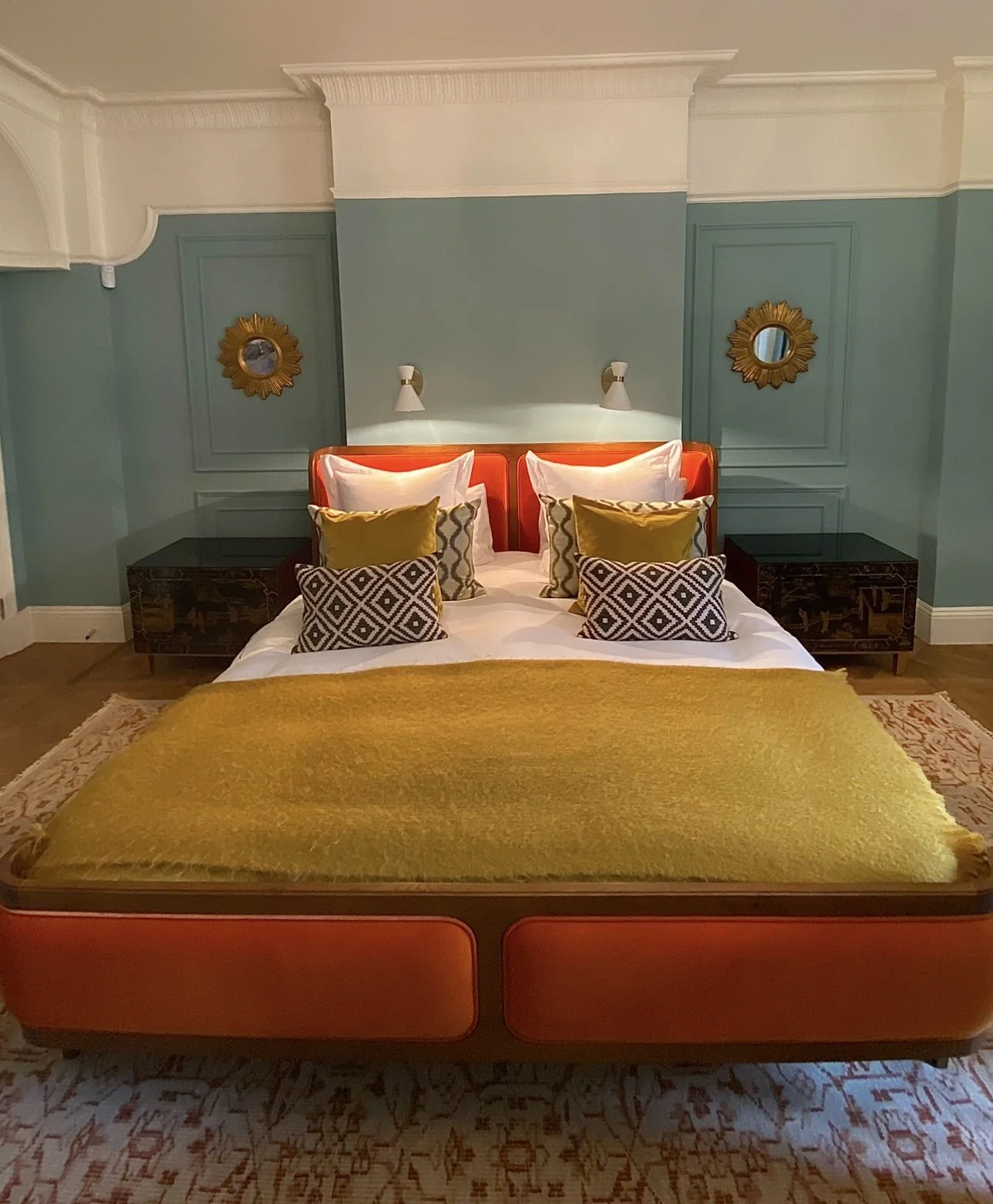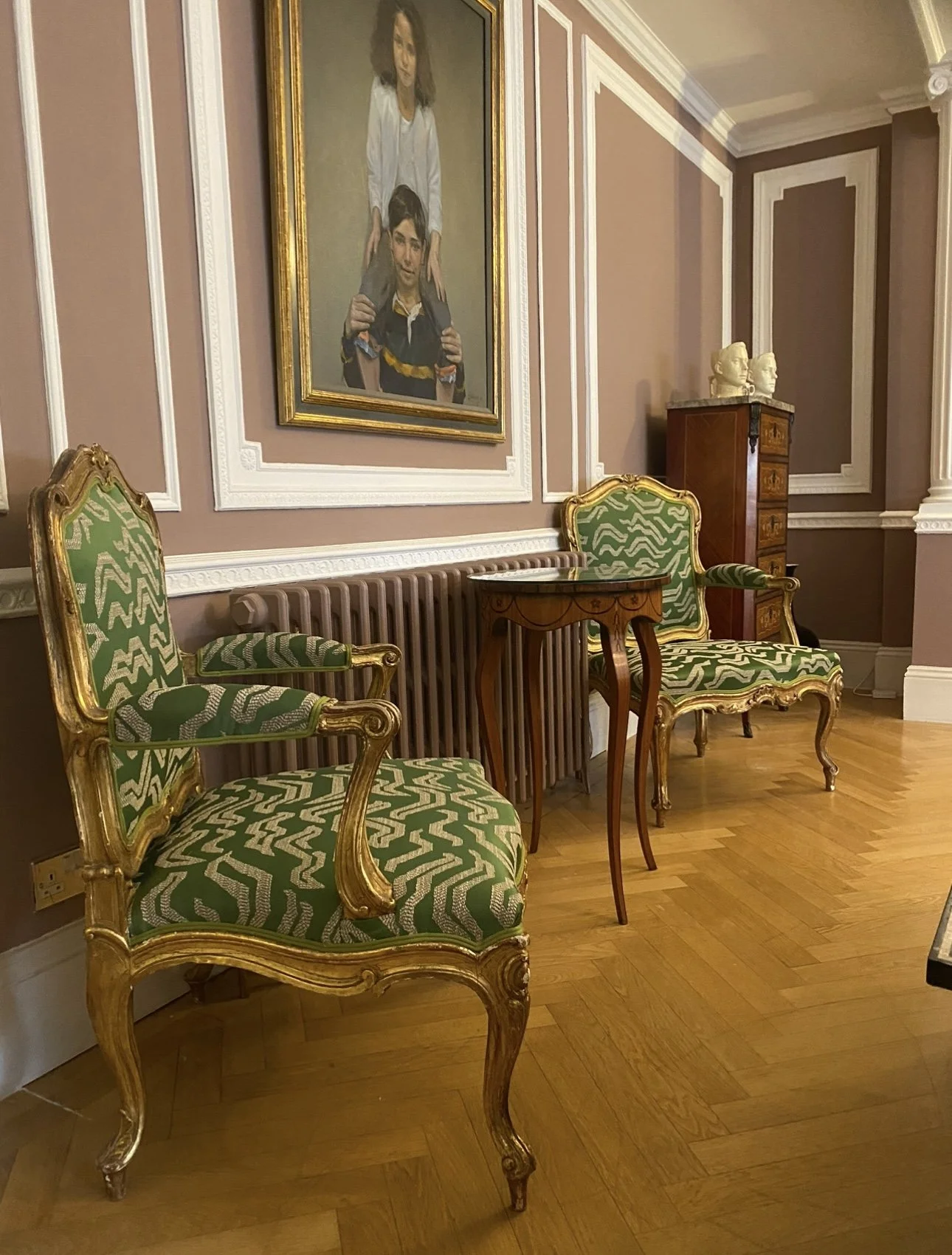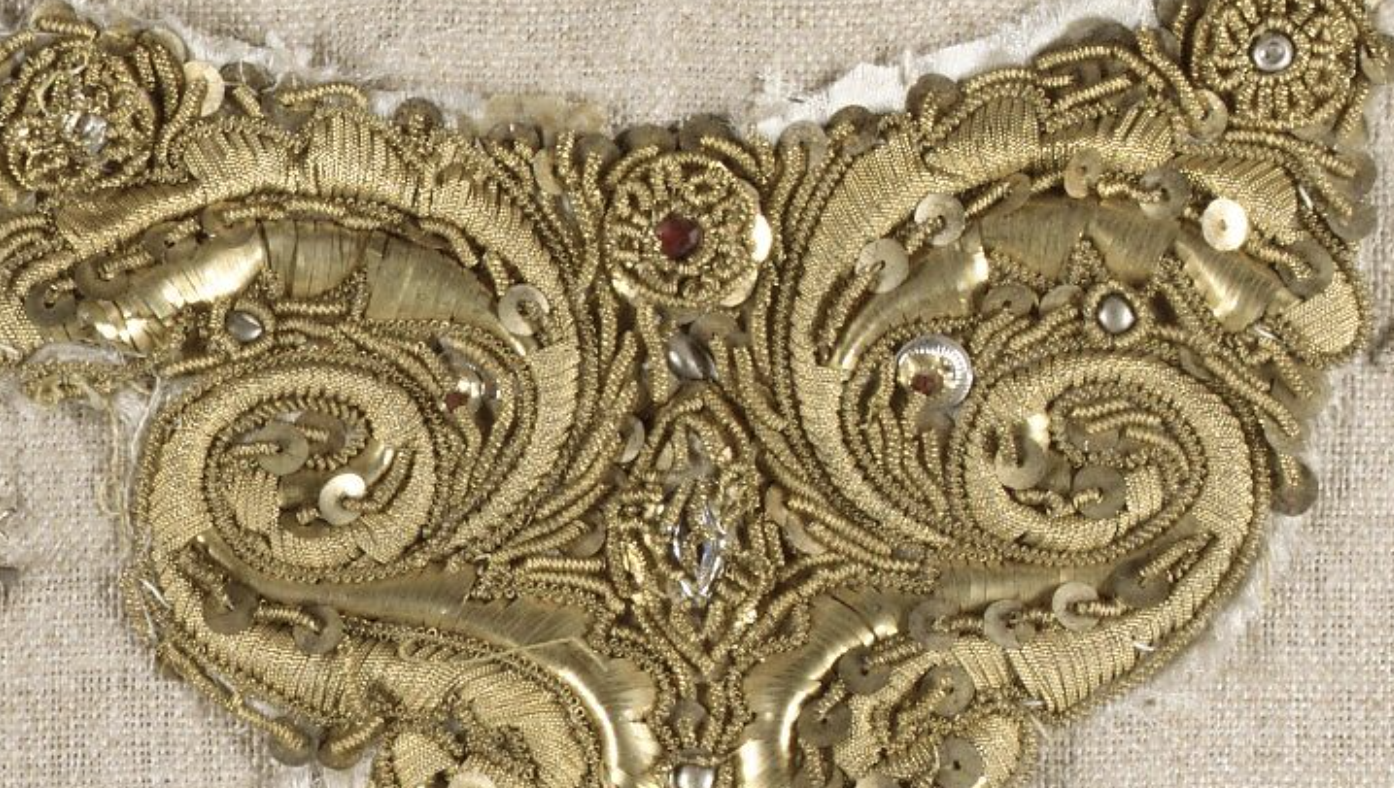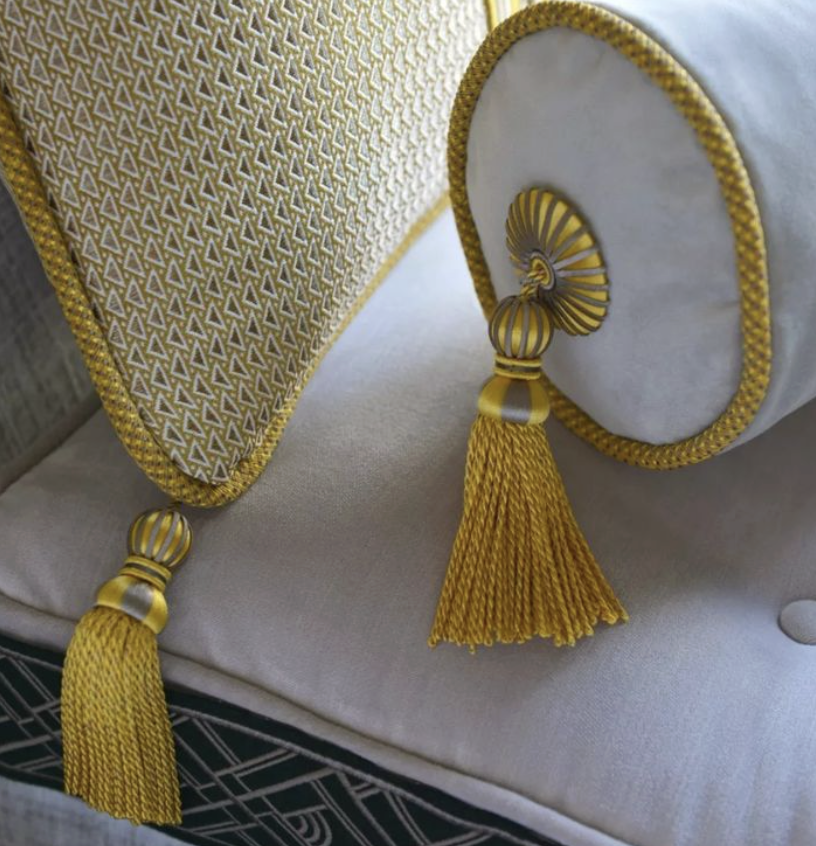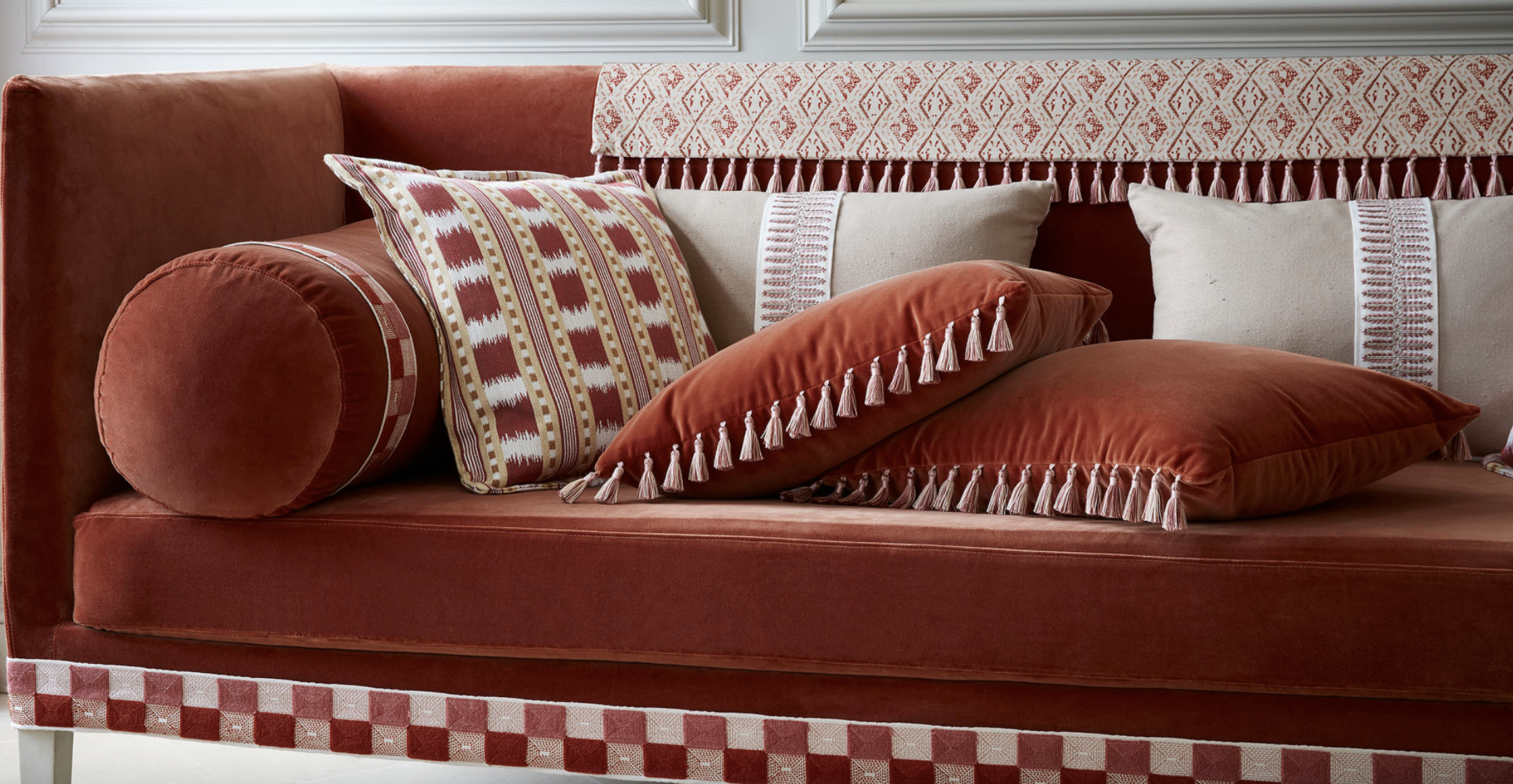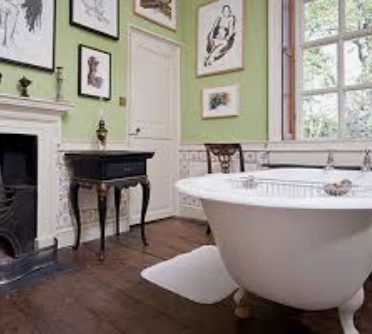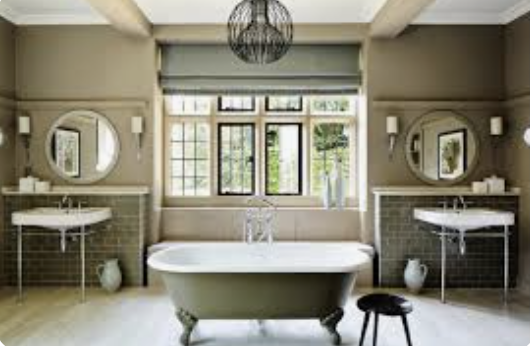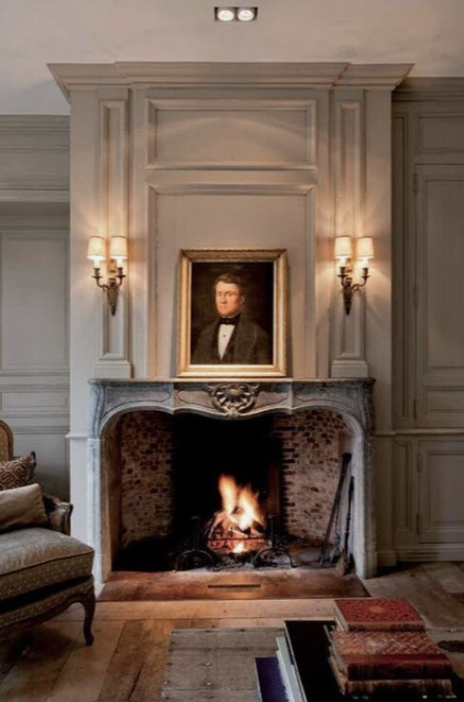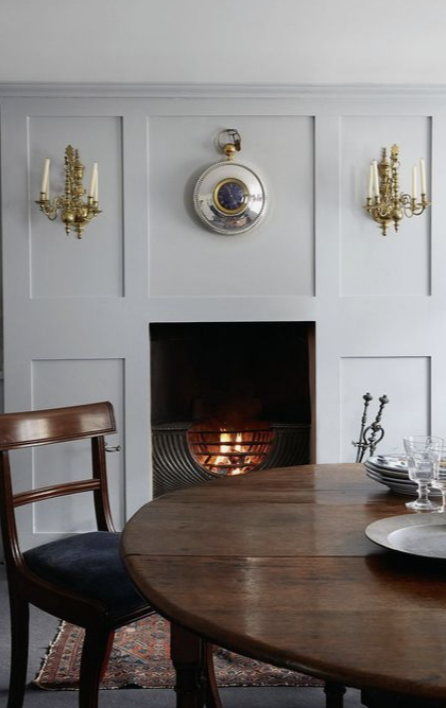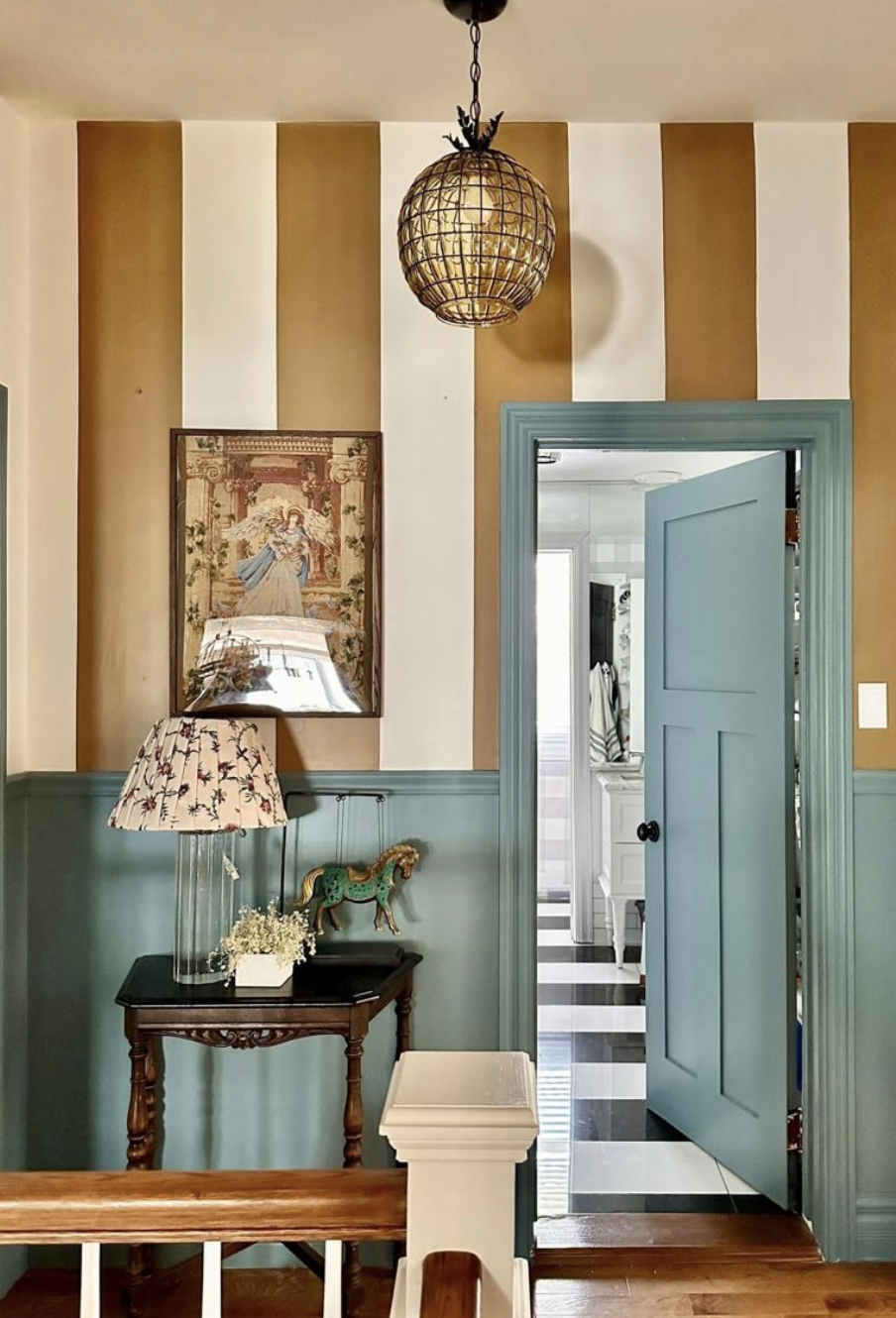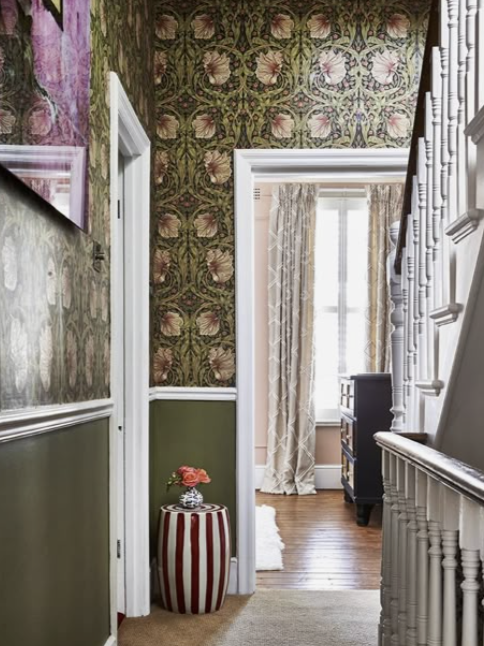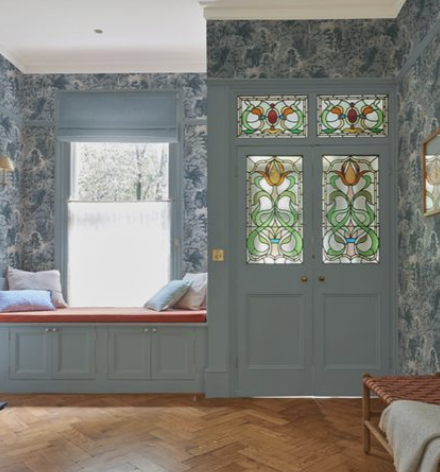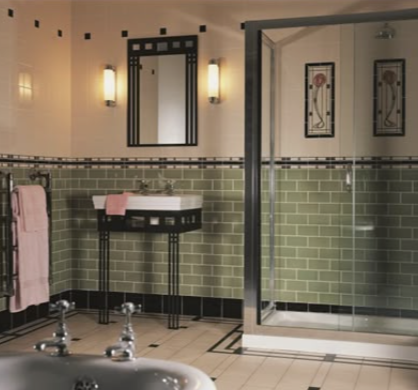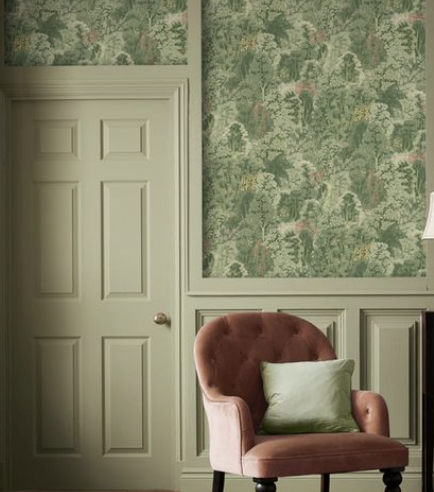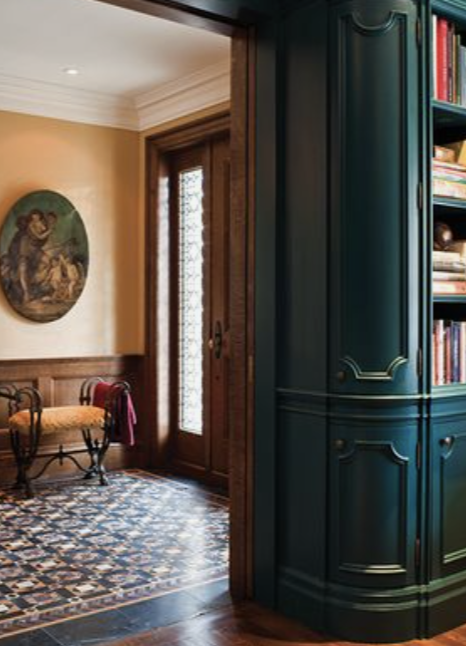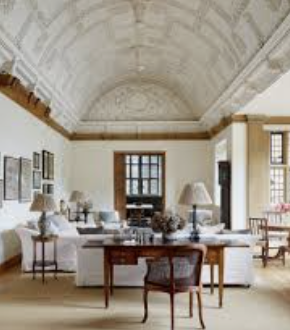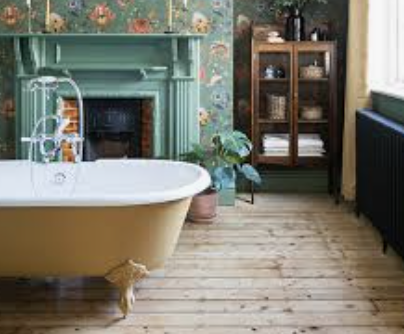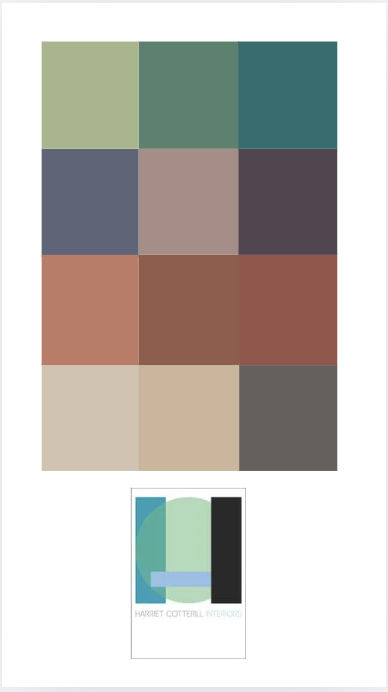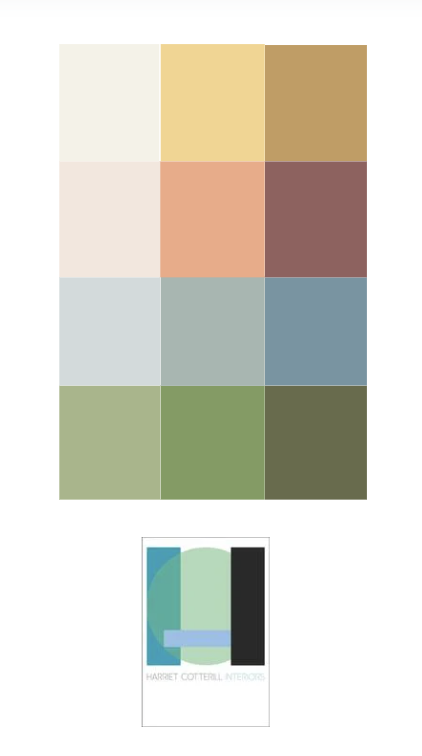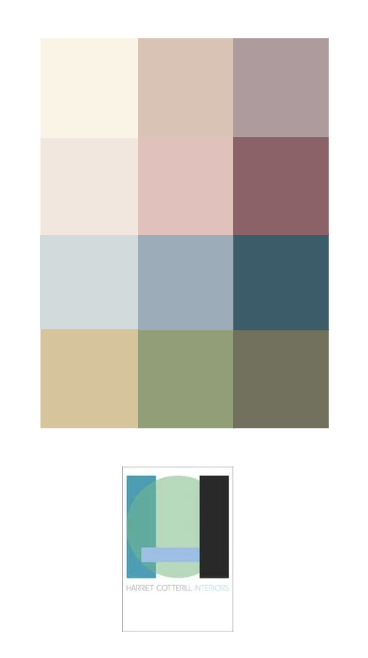THE SECRET TO MIXING ANTIQUES WITH MODERN DESIGN
Mixing antiques with modern design isn’t about following strict rules. It’s about creating a home that feels layered, lived-in, and uniquely yours. The secret lies in balance — knowing how to let history and modernity share the same space without competing for attention.
1. Start with a Clear Vision
Before you start rearranging furniture or hunting for antiques, think about the feeling you want your space to have. Do you imagine something cozy and warm? Calm and minimalist? Or maybe a little eclectic and full of character?
Having a clear vision helps everything fall into place. A modern apartment can feel instantly more inviting with a rustic wood table or a vintage rug. On the other hand, an older home can feel lighter and fresher with the addition clean-lined furniture or contemporary art. The goal is to create harmony, not uniformity.
2. Let One Style Take the Lead
Every good mix needs a starting point. Decide which look — modern or antique — will be the main voice in your space, and let the other play a supporting role.
If your home leans modern, bring in antiques as accents that add soul and history — maybe an old dresser, a classic chair, or a vintage mirror. If your space feels more traditional, you can balance it out with modern lighting, abstract art, or sleek side tables. It’s the contrast that keeps things interesting.
3. Use Colour and Texture to Tie It Together
When old and new pieces share similar colours or textures, they instantly feel connected. Try matching the tone of an antique wood cabinet with the warm hues in a modern rug, or echo the patina of a brass lamp with subtle gold accents elsewhere in the room.
Materials like linen, leather, wood, and stone are timeless — they bridge eras naturally. You don’t need everything to match perfectly; it just needs to belong together.
4. Celebrate the Craftsmanship
Antiques are special because they carry stories — they’ve lived a life before yours. That’s what gives them soul. A hand-carved chair, an old trunk, or even a weathered frame can instantly add depth and warmth to a modern room.
Let these pieces shine. Keep their surroundings simple so their craftsmanship and charm can take centre stage. It’s about appreciating the imperfections — the small nicks, the worn edges — that give a space character.
5. Keep Scale and Balance in Mind
One of the trickiest parts of mixing styles is balance. A large, ornate armoire might look out of place next to low, modern furniture unless the rest of the room feels balanced.
If something feels too heavy, offset it with something airy. If your antique piece has a lot of detail, pair it with clean lines. It’s all about creating visual breathing room so every piece has space to stand out.
6. Blend Eras Through Art and Small Details
Art is a great way to connect different styles. Try hanging a bold modern painting above a vintage console or displaying a contemporary sculpture next to an old family photo. These small contrasts make a space feel layered and alive.
Even accessories can tell a story — a stack of modern books next to an antique clock, or a smooth ceramic vase holding flowers on a weathered table. These details are what make a space feel personal rather than perfectly styled.
7. Curate, Don’t Clutter
It’s easy to get carried away when you love collecting things, but restraint makes a bigger impact. Choose a few antiques that you truly love — pieces that mean something or spark a memory — and let them shine.
When everything has space to breathe, your home feels intentional and elegant rather than overcrowded.
8. Make It Your Own
The most beautiful homes are the ones that feel personal. Don’t worry about matching styles or following trends — focus on surrounding yourself with pieces that make you feel something.
Maybe it’s your grandmother’s sideboard, a mid-century chair you found at a flea market, or a sleek lamp you picked up last month. When these things coexist, they tell your story — one that’s rich, real, and uniquely you.
The Takeaway
Mixing antiques with modern design isn’t about perfection. It’s about creating a space that feels balanced, soulful, and true to you. When old and new come together with intention, the result isn’t just stylish — it’s timeless.
It’s your history meeting your present — and that’s what makes it feel like home.
PASSEMENTERIE A GUIDE
Passementerie is the art of creating elaborate trimmings, such as tassels, fringes, braids, cords, galloons (woven bands), and gimps, typically used to decorate textiles, furniture, and clothing. The word comes from the French ‘Passement’, meaning “ornamental edging or trimming.” In interior design, passementerie elevates upholstery, curtains, cushions, and wall coverings, adding refinement and visual richness.
17th Century Passementerie
Passementerie is the art of creating elaborate trimmings, such as tassels, fringes, braids, cords, galloons (woven bands), and gimps, typically used to decorate textiles, furniture, and clothing. The word comes from the French ‘Passement’, meaning “ornamental edging or trimming.” In interior design, passementerie elevates upholstery, curtains, cushions, and wall coverings, adding refinement and visual richness.
History of Passementerie
Ancient Civilisations (3,000 BCE – 500 CE)
Egypt: Linen cords, fringes, and beadwork adorned garments, ceremonial cloths, and furniture. Fringes were both decorative and symbolic — cut edges of fabric were often knotted into fringes to prevent unraveling. Some of the earliest tassels where found in Egyptian tombs.
Greece & Rome: Decorative borders and cords embellished togas, military cloaks, and home textiles. Roman couches and curtains sometimes featured woven trims, often in contrasting colours.
Early Medieval Period (500–1000 CE)
Decorative cords reinforced the sacred and ceremonial roles of fabrics in churches and royal courts.
High & Late Middle Ages (1000–1500 CE)
Antique tassels
Guilds Established: By the 13th century, European artisans specialising in trimmings formed organised guilds. France and Italy became key centres.
Materials: Silk, gold, and silver threads were common in church vestments and By royalty.
Secular Use Expands: Nobility used passementerie on canopies, bed hangings, and ceremonial garments.
Cottage Industry:Trims were often made by single women, married women needed their husbands permission. They would also make lace and ribbons.
Passementerie became a marker of hierarchy: the more elaborate the trim, the higher the status.
Renaissance (16th Century)
Decorative trimmings flourished alongside innovations in textile weaving.
Passementiers in France and Venice refined tassel-making to an art form.
Huguenots helped to bring the craft to the Uk.
Interiors of palaces began featuring heavy use of tassels, fringes, and cords on curtains, bed drapes, and upholstered furniture.
Passementerie was used not only for embellishment but also to hide construction seams on furniture and fabric panels.
Baroque & Louis XIV’s France (17th Century)
Golden Age of Passementerie: Under Louis XIV, Versailles became the epicentre of opulent decoration. The King supported guilds of passementiers, who gained great prestige.
Tassels (glands) became highly elaborate, often featuring multiple layers of silk, metallic threads, and tiny ornaments called bouillons.
Heavy draperies in state rooms were trimmed with fringes and braids; furniture edges finished with gilded galloons and cords.
Passementerie was so prized it was inventoried separately from furniture in estate records, often more valuable than the textile itself.
Antique passemnterie
18th Century (Rococo & Neoclassicism)
The Rococo style emphasised playful, delicate ornamentation. Passementerie reflected this shift with lighter, more intricate trimmings in pastels and florals.
Neoclassical interiors used simpler galloons and narrow braids with geometric motifs, in keeping with Greco-Roman inspiration.
Passementerie also became fashionable in women’s dress — trims on gowns and accessories mirrored those in interiors.
19th Century (Empire, Victorian, & Revival Styles)
Empire Style (early 1800s): Passementerie became bold and classical, using strong cords, laurel motifs, and tassels in Napoleonic interiors.
Victorian Period (mid–late 1800s): This was a second great age of passementerie. Heavy fringes, bullion tassels, and layered braids adorned:
Curtains with pelmets and swags
Deep-buttoned upholstery with skirts trimmed in fringe
Lampshades with dramatic beaded fringes
Industrialisation allowed mass production, making passementerie accessible beyond the aristocracy. Even middle-class homes had fringed antimacassars, cushion trims, and tasseled draperies.
Modern upholstry trim and tassels
20th Century
Early 1900s (Edwardian & Art Nouveau): Passementerie was lighter and more stylized, often featuring floral and organic motifs.
1920s–30s (Art Deco): Geometric galloons and bold cords reflected modernist aesthetics. Fringe took on a new role in fashion (think flapper dresses), though interiors used it more sparingly.
Mid-20th Century (Modernism): With the rise of minimalist design, passementerie fell out of favour. Designers like Le Corbusier and Mies van der Rohe rejected decorative trims in favour of clean lines.
Late 20th Century: Historicist revivals (French Provincial, English Country House, Hollywood Regency) brought passementerie back in decorative interiors.
21st Century
Selective Use: Today, passementerie is often used sparingly — not as lavish covering, but as accents to highlight craftsmanship. But there is a maxamalist movement in interior design which is bringing back the use of passementerie, to decorate curtains, cushions and on sofas.
Modern Adaptations:
Natural fibres (linen, cotton) instead of silk
Minimalist cords and monochrome braids for contemporary interiors
Tassels and fringes reimagined in playful, oversized, or colourful ways in eclectic and bohemian design
Luxury Interiors: In high-end residential and hospitality projects, passementerie is still a hallmark of custom drapery and upholstery, referencing centuries of tradition.
Antique Tassel
Styles of Passementerie & Their Use
1. Tassels (Glands)
Description: A bundle of threads, silk cords, or metallic strands tied together at one end with a decorative “head” or cap.
Examples:
French Baroque Tassels: Large silk tassels with multiple layers, often paired with metallic bouillons (curled threads).
Victorian Key Tassels: Smaller tassels hung from cabinet or wardrobe keys.
Contemporary Tassels: Oversized cotton or wool tassels used on bohemian cushions or curtain tiebacks.
Drapery Tiebacks: Luxurious tassel tiebacks can transform plain curtains into focal points.
Furniture Keys: Tassels add a romantic or historical feel when tied to armoire or bureau keys.
Cushions & Throws: Small corner tassels add whimsy and movement.
Lighting: Used as finials on lamps or chandelier embellishments in traditional interiors.
Fringed cushions
2. Fringe
Description: A decorative edging of hanging threads, cords, or beads.
Examples:
Bullion Fringe: Long, twisted cords of silk or metallic thread, used heavily in 19th-century parlours.
Brush Fringe: Soft, dense threads cut evenly like a brush, often found on cushions or lampshades.
Beaded Fringe: Glass beads or crystals strung together, popular in Art Deco and Victorian lampshades.
Loop Fringe: Rounded thread loops used on lightweight fabrics or casual trims.
Curtains & Valances: Adds weight and movement to draperies.
Furniture: Applied along sofa bases, ottoman skirts, or armchair edges.
Cushions & Bedding: Adds texture and a tactile finish.
Lighting: Beaded or brush fringe softens lamp edges, creating a vintage glow.
Modern cushions decorated with braid.
3. Braids & Gimps
Description: Narrow woven trims, often geometric, used for edging and concealing raw fabric edges.
Examples:
Gimp Braid: A flat, narrow, slightly raised braid with a scrolling or wavy pattern.
Herringbone or Chevron Braids: Woven bands with zigzag or geometric motifs.
Metallic Galloon Braid: Gold or silver woven band, often used in ceremonial or ecclesiastical textiles.
Upholstery: Covers seams, tacks, or staples along the edges of chairs, sofas, and headboards.
Curtains: Applied to the leading edges of drapery panels as a decorative border.
Accent Decoration: Outlines cushions, lampshades, or wall panels for contrast.
Tailored Finishes: Offers a neat, subtle trim in contemporary interiors where tassels and fringes may feel too ornate
Decorative Ropes
4. Cords & Ropes
Description: Twisted strands of fibres, silk, or metallic threads, often plied in contrasting colors.
Examples:
Silk Ropes: Common in Baroque interiors, often finished with tassel ends.
Two-Tone Twisted Cords: Popular in French Provincial upholstery.
Natural Linen Rope: Contemporary eco-friendly variant, often used in rustic interiors.
Drapery Tiebacks: Rope tiebacks provide a simple or dramatic alternative to hardware.
Piping (Corded Edges): Outlines cushions, bolsters, and bedding.
Furniture Outlines: Adds a dimensional border to armchairs, sofas, and ottomans.
Architectural Detailing: Thick cords or ropes applied as borders around mirrors, doorframes, or paneling.
Antique Metallic Gallion
5. Galloons & RibbonsDescription: Flat, woven bands of silk, cotton, or metallic thread; can be patterned or plain.
Examples:
Gold Galloon: Wide, metallic band used on military uniforms and Baroque furniture.
Velvet Ribbon with Metallic Edge: Popular in Rococo and Victorian interiors.
Modern Graphic Banding: Clean woven bands in solid or geometric colors for a contemporary edge.
Borders on Curtains: Runs vertically along the leading edge or bottom hem.
Wall Coverings: Frames fabric wall panels or wallpaper for a formal effect.
Furniture Trim: Adds a band of contrast along upholstered chairs or benches.
Graphic Accent: Modern designers use galloon-like bands to add bold lines on neutral textiles.
Modern Key Tassel
6. Key Tassels (Smaller Category)
Description: Miniature tassels, functional yet decorative.
Examples:
18th-Century French Key Tassels: Found on armoires and desks in aristocratic homes.
Victorian Desk Tassels: Decorative pulls for drawers and cabinets.
Contemporary Versions: Leather or linen tassels on minimalist furniture.
Cabinetry & Hardware: Adds charm to wardrobes, bureaus, and desks.
Decorative Accessories: Used as ornaments on baskets, door handles, or even books.
Layered Detail: Creates a sense of history and craftsmanship in otherwise simple furniture.
Contemporary upholstery trim used on sofa cushion and curtain
How Each Style is Used Today
Traditional/Classical Interiors: Tassels, bullion fringe, and galloon braids maintain authenticity in period-style homes.
Eclectic & Bohemian Styles: Bold brush fringes, colourful tassels, and beaded trims inject playfulness and texture.
Minimalist/Modern Interiors: Cords, narrow braids, and tonal banding provide clean finishes without overwhelming decoration.
Luxury Hospitality: Passementerie continues to appear in hotels, luxury homes, theatres, and palaces where grandeur and ceremony are emphasised.
Contemporary upholstery used on sofa and cushions
A GUIDE TO RENOVATING GEORGIAN PROPERTY
Georgian interior, Georgian interior design, Georgian style guide,Georgian house decoration" or "modern Georgian living room ideas
Renovating a Georgian property is both a challenge and a pleasure, There are many features which make up a typical Georgian home, this guide will talk you through what you need to consider when renovating one.
The Georgian era ranged from 1714 - 1837, Typical Georgian features include large tall windows, high ceilings, simple and elegant design, symmetry and classical proportions. Installing mod cons sympathetically is part of the renovation process, to make your home comfortable.
Many Georgian houses are listed, If you live in a listed property check with your local planning office that all changes will be approved.
Throughout the house: Replace radiators with cast iron period column radiators for a sympathetic historical look, although not Georgian they will work well with Georgian style.
The Grand Hallway: Making an Entrance
The hallway of a Georgian home gives you the first impression, setting the tone for what’s to come. When you walk through the door, you want to feel the hallway is inviting grand and elegant.
Restoring Cornices and Mouldings: Georgian hallways often feature beautiful plaster mouldings and cornices. These might have been hidden under layers of paint or damaged over the years. If any details are missing, a skilled plaster specialist can recreate them to match the original design. It is also possible to buy plaster reproduction to replace what might no longer be there.
Flooring: If your Georgian hallway has its original black-and-white chequered flooring or flagstones, restoring these adds a real sense of history. If they’re beyond saving, you can find materials like reclaimed stone or wood or tiles to keep the period look authentic.
Lighting: The hallway needs to feel welcoming. You could install a grand chandelier or subtle wall lights, but keep the fixtures classic . Brass or wrought-iron finishes work well, complementing the historical feel.
Colour Palette: Georgian hallways were often painted in soft, neutral tones like pale creams, warm greys, and muted greens. These colours help to reflect light and make the hallway feel spacious and elegant.
Furniture : If the hallway is big enough install a statement antique chair, console table and accessorise with a mirror and artworks.
The Living Room: Restoring Elegance
Living rooms in Georgian homes were designed to impress, and the key to restoring this space is all about balance – keeping the period features, but making it cosy and liveable.
Fireplaces: A grand Georgian fireplace is the heart of the living room. Restoring an original marble or cast-iron fireplace can make a huge difference. If the original fireplace is gone, source a reclaimed or reproduction fireplace surround.
Cornices and Ceiling Roses: The ceiling details in Georgian homes are works of art in themselves. If your living room has intricate cornices or a beautiful ceiling rose, they should be restored carefully. If they’ve been lost over time, you can buy them from a specialist plaster shop.
Sash Windows: The tall, elegant sash windows are one of the standout features of Georgian properties. Restoring the original sash windows – complete with their pulleys and weights – is important to maintain the character of the room. They can be draught-proofed without losing any of their charm. If the window is deep enough an additional pain of glass can be installed to make the window double glazed.
Flooring: Polished wooden floors were a typical feature of Georgian dining rooms. If you have original floorboards, restore them to their former glory. If not, opt for period-style flooring that complements the room’s formal feel. Choose a large oriental wool rug to make the room feel cosy
Colours: Choose soft, muted tones like pale greys, soft greens, muted pinks or dusty blues for the living room. These colours were popular in Georgian times and will help the room feel calm and elegant, while also letting the period details shine.
Lighting: Install a beautiful chandelier, and wall sconces, they are like jewellery on a beautiful woman, and will complement the beauty of the room. A glass or crystal antique chandelier or a modern Murano chandelier all work in this space.
Furnishing a Georgian Lining room; Using reupholstered Regency or Georgian antique sofas and armchairs would be very appropriate. Also carefully chosen modern pieces, accessorised with antique mirrors and artworks modern or traditional .
The Dining Room:
In a Georgian home, the dining room was often a formal space for entertaining. Restoring this room gives you the chance to embrace the grand, slightly dramatic atmosphere that was common at the time.
Fireplace: As in the living room, the fireplace is key. Restoring or replacing it with a period-appropriate stone or marble surround adds instant impact.
Wall Panelling and Mouldings: Many Georgian dining rooms featured wall panelling or dado rails, along with decorative plaster mouldings. If these features are missing, it’s worth considering adding them back. They bring depth and character to the room.
Flooring: Polished wooden floors were a typical feature of Georgian dining rooms. If you have original floorboards, restore them to their former glory. If not, opt for period-style flooring that complements the room’s formal feel.
Rich Colours: Georgian dining rooms often used dramatic, darker tones like deep reds, dark greens, and rich blues. These colours give the room a warm, intimate feel.
Furnishing: A beautiful antique table and chairs would look beautiful in this room, and could be reupholstered to match the scheme. Alternatively a modern table and chairs chosen for the space would also work well. Again beautiful lighting, a chandelier and wall sconces are essential in this room.
The Heritage-Style Kitchen: A Mix of Old and New
Georgian kitchens were vastly different from the ones we’re used to today. So, when renovating, it’s important to blend the old with the new, creating a kitchen that’s practical but still fits in with the rest of the house.
Cabinetry: Look for shaker-style cabinets – they’re timeless and work beautifully in a heritage-style kitchen. Painted in soft colours like sage green, cream, or light grey, they look classic but offer all the modern storage solutions you need. Handles should be chosen in heritage materials, pewter, brass or copper, and chosen well will enhance the cabinetry.
Fireplace or Hearth: Many Georgian kitchens had large hearths. If yours still has one, it’s worth restoring, even if it’s just as a feature. You could use it to frame a modern range cooker or keep it as a decorative nod to the past.
Worktops and Splash backs: Use natural materials like wood, marble, or stone for the worktops. These materials feel warm and authentic, fitting seamlessly into the period style. For splash backs, simple tiles or natural stone add a subtle but effective touch.
Flooring: A kitchen with stone or wood floors will feel instantly grounded in history. Limestone or flagstone flooring is practical and long-lasting, while wide, reclaimed oak boards give the room a rustic yet refined look.
Colours: Soft heritage tones like off-whites, greys, greens or subtle blues will help the kitchen feel light and airy, while still staying true to the Georgian period.
Lighting: The Lights could be pendants or a traditional style light fitting matched to the metal handles used on cabinetry.
Furnishing: A reclaimed farmhouse table and chairs, or bench seating would work best in this space. Also consider a modern table and chairs as a juxtaposition to the traditional. Roman blinds would complement as a window treatment.
The Bedrooms: Simple and Serene
Bedrooms in Georgian homes tend to be more understated, with simpler features compared to the grander living spaces. Restoring them is about creating a calm, comfortable space that still reflects the history of the home.
Fireplaces: Many Georgian bedrooms have small, cast-iron fireplaces. Restoring these can add an elegant focal point to the room, even when they’re no longer in use.
Mouldings and Plasterwork: While the decorative plasterwork in bedrooms is often less elaborate than in other rooms, it’s still important to restore or recreate the original mouldings to keep the period feel intact.
Sash Windows: Like the rest of the house, the sash windows in the bedrooms should be carefully restored. Ensuring they work properly and are draught-proofed will help make the room comfortable without losing any of its character.
Colour Scheme: For bedrooms, choose soft, restful tones like pale blues, soft pinks light greys, or creams. These colours create a peaceful atmosphere, in keeping with the simplicity and elegance of Georgian design.
Furnishings: Either use antique beds or a divan with a statement headboard, antique or modern bedside tables, chosen for their simple craftsmanship, with turned details. If there’s room add softly upholstered armchair. Accessorise with oriental woollen rugs mirrors and picture frames, some wall lights and smaller chandeliers should be considered.
The Bathroom: Modern Comfort with a Period Twist
Bathrooms as we know them didn’t exist in Georgian homes, so this space requires a thoughtful approach. You want modern convenience but with a nod to the past.
Sanitary ware: Opt for Victorian-style fittings, like a freestanding clawfoot bathtub and a traditional pedestal sink. An antique chest of draws can also be used as a base for a sink. These aren’t strictly Georgian, but they evoke a classic feel that fits well with the rest of the house. Shower fittings should be open pipework Victorian style.
Flooring: Go for natural stone, marble, or traditional floor tiles. Geometric black-and-white patterns or simple stone finishes will keep the bathroom in line with the home’s historical charm.
Colours: Keep the bathroom light and fresh with soft whites, light greys, green or subtle blues. Brass, copper or nickel fittings also add a classic touch.
Bringing It All Together
Renovating a Georgian property is all about balancing the old with the new. By restoring original features like mouldings, fireplaces, and sash windows, and carefully introducing modern comforts, you can create a home that feels both timeless and practical.Every room has its own character, and by using historically appropriate paint colours, natural materials, and sympathetic design choices, you can respect the heritage of the house while making it your own. It’s a delicate process, but when done well you will have a rewarding and beautiful result.
A GUIDE TO RENOVATING VICTORIAN PROPERTIES
"Victorian style guide", "Victorian home décor",
History and Style of Victorian Houses
Victorian houses were built during the reign of Queen Victoria (1837–1901) and encompass a wide variety of architectural styles, including Gothic Revival, Italianate, Folk Victorian, Jacobeathan and Queen Anne. These homes are known for their ornate detailing, rich materials, and intricate craftsmanship, reflecting the prosperity and ambition of the era. Victorian homes had more elaborate detailing than Georgian homes, characterised by gothic features, and the use of new materials coloured glass and metal, made possible by the industrial revolution.
Victorian houses are characterised by:
Elaborate facades featuring decorative brickwork, bay windows, and stone embellishments.
High ceilings and grand proportions.
Ornate plasterwork, including ceiling roses and cornices.
Stained glass windows with intricate designs.
Patterned floor tiles, particularly in hallways and entrances.
Heavy wooden doors with decorative ironmongery.
Fireplaces in almost every room, often featuring carved wood, marble, or cast iron.
Dado and Picture Rails, adding decorative and practical elements to walls.
Wallpaper Characterised by elaborate patterns, rich colors, and intricate designs, Victorian wallpaper reflected the era's fascination with ornamentation and the revival.
Renovation Tips
Many original features would have been removed during the 1960’s and 70’s where the Victorian aesthetic was unfashionable.
When renovating a Victorian home, it is essential to balance historical features with modern functionality. Here are key considerations:
Restoring Period Features
Windows & Doors: Preserve original sash windows and solid wooden doors where possible, or use high-quality replicas.If the windows have shutters replace of repair them.Add secondary glazing if you have the original windows.
Fireplaces: Open up even if only using them as a decorative feature. Restore or replace with Victorian-style cast-iron or tiled fireplaces.
Flooring: Keep or reinstate original wooden floors, encaustic tiles, or parquet.
Plasterwork & Cornices: Strip paint, and remove any mould. Repair or replicate decorative mouldings to maintain period authenticity. Replace or repair ceiling roses.
Dado Rails & Picture Rails: Preserve or reinstate these features to enhance period charm and break up wall space aesthetically.
Enhancing Natural Light
Victorian homes can be dark due to their narrow windows and deep layouts. Consider:
Adding larger windows or French doors to increase natural light.
Installing skylights in extensions or loft conversions.
Using light-reflective colour palettes and mirrors to brighten spaces.
Modern Comforts with Period Features.
Kitchen Extensions: A sensitive rear extension can provide modern open-plan living while retaining period features.
Bathroom Upgrades: Introduce traditional fittings such as clawfoot baths and high-level cistern toilets.
Energy Efficiency: Improve insulation and introduce secondary glazing to retain heat while preserving original windows.
Room-by-Room Renovation Guide
Hallways & Entrances
Victorian hallways make a bold first impression with tiled floors and decorative archways.
Flooring: Restore original encaustic or geometric tiles or install Victorian-style replicas.
Colour Palette: Deep greens, heritage blues, or rich burgundies for an opulent feel.
Lighting: Ornate pendant lights or period wall sconces.
Doors & Windows: Retain or restore stained glass and decorative fanlights.
Living Rooms
Typically formal spaces with grand fireplaces and bay windows.
Colour Palette: Rich jewel tones like emerald green, deep navy, or dark red. Wallpaper is also very appropriate for Victorian rooms
Fireplace: Retain or restore a Victorian cast-iron fireplace with decorative tiling.
Ceilings: Preserve intricate ceiling roses and cornicing.
Dado & Picture Rails: Use dado rails to separate two-tone wall colours and picture rails to elegantly frame artwork.
Furniture: Mix period antiques with modern comforts for a balanced look.
Dining Rooms
Often separate rooms designed for entertaining, also the option of opening up the room making an open plan space.
Colour Palette: Warm golds, deep purples, or dark teals or wallpaper for a luxurious ambiance.
Flooring: Maintain original wooden floors and add a period-style rug.
Lighting: Chandeliers or wall-mounted gaslight-style fixtures.
Storage: Retain or add built-in cabinetry and sideboards.
Dado & Picture Rails: Use dado rails to define lower wall panelling and picture rails to add classic Victorian detailing.
Kitchens
Victorian kitchens were utilitarian but can be reimagined with period features and modern efficiency.
Colour Palette: Soft greys, dark blue or terracotta heritage whites, or muted greens.
Cabinetry: Shaker-style cupboards with brass or ceramic handles. Add a butchers sink, for authenticity.
Worktops: Butcher block, marble, or stone for a classic aesthetic.
Lighting: Industrial-style pendant lights or period-appropriate sconces.
Bedrooms
Elegant spaces that can be both cosy and grand.
Colour Palette: Soft pastels, muted pinks, or warm neutrals.
Flooring: Wooden floors with Victorian-style rugs for warmth.
Windows: Retain sash windows with heavy drapes or plantation shutters.
Wardrobes: Built-in storage with panelled doors in keeping with Victorian aesthetics.
Picture Rails: Use to elegantly display artwork or decorative elements.
Bathrooms
A Victorian style bathroom will be a classic, historical and luxurious addition.
Colour Palette: Classic white with black accents, or soft blues and greys.
Fixtures: Clawfoot baths, pedestal sinks, and high-level cistern toilets.
Flooring & Tiles: Black and white checkered tiles or ornate ceramic patterns.
Accessories: Traditional brass or chrome fixtures, vintage mirrors, and towel rails.
Conclusion
Renovating a Victorian home requires a thoughtful approach balancing restoration and updating the house to modern standards. Restoring period features and choosing sympathetic updates, you can enhance the timeless elegance of a Victorian property while ensuring it remains practical for contemporary living. Dado and picture rails are essential elements that contribute to the Victorian aesthetic, offering both functional and decorative appeal in almost every room.
It all begins with an idea. Maybe you want to launch a business. Maybe you want to turn a hobby into something more. Or maybe you have a creative project to share with the world. Whatever it is, the way you tell your story online can make all the difference.
GUIDE TO EDWARDIAN RENOVATIONS
"Edwardian interior design", "Edwardian house style", and "Edwardian period features"
History and Style of Edwardian Houses
The Edwardian period started during the reign of King Edward VII (1901–1910) and continued into the early 1920s. The style of Edwardian homes marked a departure from the ornate and heavy Victorian era, embracing a lighter, more spacious, and refined aesthetic. Influenced by the Arts and Crafts movement, Edwardian architecture focused on craftsmanship, simplicity, and the use of high-quality materials.
William Morris characterised the Edwardian aesthetic with his focus on craftsmanship and quality, and designs inspired by nature. Morris famously said “have nothing in your house that you do not know to be useful or believe to be beautiful” a real shift from the fussiness of victorian homes.
Edwardian houses are characterised by:
Red brick facades with decorative stone or timber accents, half pebbledash treatment and mock timber. Exterior Brick work used in a decorative way.
Bay windows that allow for more natural light, bay windows could be square or rounded.
Large, airy rooms with high ceilings, often wider than Victorian houses.
Patterned tile pathways leading to front doors.
Ornate wooden porches and stained-glass features.
Wide hallways and spacious layouts, often incorporating grand staircases.
Decorative cornices and mouldings, but less intricate than Victorian styles.
Fireplaces in most rooms, often with wooden or tiled surrounds.
Renovation Tips
When renovating an Edwardian house, it is essential to preserve its historical features while updating it for modern living. Here are some key considerations:
Restoring Period Features
Windows & Doors: Retain original sash windows and wooden doors, or replace with sympathetic replicas. Replace of repair any window shutters. Add well designed glazing to future proof and update the house to current building eco standards.
Fireplaces: Restore original fireplaces or install period-appropriate reproductions.
Flooring: Preserve original wooden floorboards or install reclaimed timber flooring.
Plasterwork, Cornices, picture and Dado rails: Repair decorative mouldings and ceiling roses to maintain the house’s character. Reinstate or repair Dado and picture rails for an authentic period look.
Paint Colours: Paint company's worth considering are Little Greene, which have paint specific to several eras. Farrow and Ball, many of their colours have been recreated to match heritage colours. Also Edward Bulmer Natural Paints have period appropriate colours. All of these companies have guides to using their paint in period properties online.
Enhancing Natural Light
Edwardian homes often have large windows, but some spaces can still feel dark. Consider:
Adding roof lights or skylights to increase natural light.
Installing glass doors to open up spaces without losing period charm.
Modern Comforts with Period Charm
Kitchen Extensions: Create an open-plan space while using materials like wood and stone to blend with original features.
Bathroom Updates: Incorporate roll-top baths, traditional-style sinks, and period-style tiling.
Energy Efficiency: Upgrade insulation, add solar panels and install secondary glazing to improve thermal efficiency without altering original windows.
Room-by-Room Renovation Guide
Hallways & Entrances
Edwardian hallways are typically wide and inviting, often featuring Encaustic tiled floors and wooden paneling.
Flooring: Restore original patterned tiles or install period-style alternatives.
Colour Palette: Soft greys, muted blues, or sage greens to maintain a classic feel.
Lighting: Statement chandler or period-style wall sconces.
Doors & Windows: Retain stained glass if present, or introduce period-style replicas.
Panelling: Repair or install panels to add character and design interest to the hallway.
Furniture: Console table, a statement chair, artworks and mirrors to add interest to the space.
Living Rooms
These rooms are often spacious with decorative fireplaces and large bay windows.
Colour Palette: Warm neutrals, soft creams, muted pinks heritage greens or green blues.
Fireplace: Restore original fireplaces or opt for cast-iron or tiled period-style fireplaces.
Ceilings: Retain or restore decorative mouldings, cornice and ceiling roses.
Lighting: A central dimmable Chandelier, wall sconces and table Lamps will give a good mix of flattering lighting.
Flooring: Restore or replace wooden floorboards. Add hand knotted Wool rugs for a cosy atmosphere.
Furniture: Mix antique and modern pieces for a balanced look. Key accessories are artworks, books, mirrors and carefully chosen ceramics and glassware.
Storage: Built in bookshelves with cupboards.
Soft Furnishings: Curtains, blinds and cushions will elevate the room.
Dining Rooms
Many Edwardian homes have separate dining rooms, which can be made functional while preserving historical charm.
Colour Palette: Deep reds, navy blues, or warm ochres to create a sophisticated atmosphere.
Flooring: Restore wooden floors and add a oriental rug for warmth.
Lighting: Chandeliers or period-style wall lights add a sense of grandeur.
Fireplace & Storage: Incorporate built-in cabinetry or sideboards for storage.
Curtains or blinds: Set the tone with an interesting window treatment.
Furniture: Oak arts and Crafts style table and chairs antique would be best for authenticity.
Kitchens
While Edwardian kitchens were often small and utilitarian, modern renovations can blend classic elements with contemporary convenience.
Colour Palette: Creams, pastel greens, or duck-egg/pastel blue for a fresh look.
Cabinetry: Shaker-style units, The “ In frame” style is appropriate with brass or ceramic handles.
Worktops: Butcher block or marble look granite for a traditional yet stylish feel.
Lighting: Pendant lights over workspaces or a central chandelier.
Flooring: Restore stone or wooden floors.
Furniture: Instead of an Island consider a wooden rustic style farmhouse table with bench seating or antique chairs.
Window treatments: Roman blinds work well and help to soften the space
Bedrooms
Edwardian bedrooms are typically spacious and can be styled elegantly while maintaining period features.
Colour Palette: Soft lavenders, dusky pinks, or light blues for a tranquil ambiance.
Wallpaper: Botanical and floral wallpaper.
Flooring: Wooden floors with plush rugs for added comfort.
Windows: Retain sash windows with period-appropriate curtains or shutters.
Wardrobes: Built-in storage with paneling to match Edwardian aesthetics.
Furniture: Cast Iron or Upholstered beds, upholstered arm chair, chest of draws, bedside tables antique pieces work well here.
Lighting: A small chandelier, table lamps, wall lights.
Window Treatment: Curtains if the windows are large, otherwise use
roman blinds.
Accessories: Cushions, Mirrors artworks.
Bathrooms
Traditional Edwardian bathrooms often featured freestanding baths and detailed tiling.
Colour Palette: White with black accents, soft pastels, or navy with brass fittings.
Fixtures: Roll-top baths, pedestal sinks, and high-level cistern toilets.
Flooring & Tiles: Black and white checkered tiles or period-style ceramic tiles.
Accessories: Vintage mirrors, traditional towel rails, and wall-mounted lighting.
Conclusion
Renovating an Edwardian home means preserving period features while making thoughtful updates, you can maintain the character and elegance of the home while enhancing its comfort and functionality. A carefully chosen colour palette and period-appropriate furnishings mixed with some modern pieces can bring out the character of each room while ensuring the space remains practical for contemporary living.
My Guide Guide to Choosing Paint Colours by Room Orientation
"Interior painting guide" , interior paint colour guide", "Choosing paint room colours, colour scheme guide for interiors
Featuring: Farrow & Ball, Little Greene, and Edward Bulmer
Understanding Light and Colour in Interiors
Natural light dramatically changes how we perceive colour. Here's how:
Key Factors That Influence Colour Appearance:
Time of Day: Morning light is cooler and sharper; afternoon light is warmer and softer.
Window Direction: North-facing rooms get cooler, diffused light; south-facing rooms receive warm, consistent sunlight.
Surface Reflectivity: Matte finishes absorb light; glossier paints reflect it.
Surrounding Elements: Flooring, upholstery, and even window glass can cast coloured reflections on your walls.
NORTH-FACING ROOMS
Light Qualities:
Grey, indirect light all day
Cooler and dimmer, especially in the morning
Shadows appear more bluish
Colour Strategy:
Avoid cold or stark whites—they can feel sterile.
Choose warm, rich tones or deep, moody hues to enhance coziness.
Warm neutrals and earthy tones add balance.
Paint Colour Suggestions:
Brand Colour Tone & Description
Farrow & Ball Sulking Room Pink Romantic muted rose
Farrow & Ball Oval Room Blue Deep blue-green with grey
Farrow & Ball London Clay Earthy taupe with mauve
Farrow & Ball Pelt Dramatic aubergine purple
Little Greene Woodland Deep forest green
Little Greene Dark Lead Colour Warm charcoal
Little Greene Mushroom Warm, greyed-off neutral
Edward Bulmer Red Ochre Earthy red
Edward Bulmer Brick Rustic terracotta
Edward Bulmer Ochre Mustard yellow warmth
SOUTH-FACING ROOMS
Light Qualities:
Bright, golden light throughout the day
Makes colours appear warmer
Can intensify bold tones
Colour Strategy:
Most colours thrive here—bold, saturated, or dark shades especially.
Use cooler tones to balance warmth.
Whites and off-whites look creamy or golden in southern light.
Brand Colour Tone & Description
Farrow & Ball India Yellow Rich mustard gold
Farrow & Ball Bancha Olive green
Farrow & Ball Down Pipe Deep slate with blue
Farrow & Ball Stone Blue Warm mid-blue
Little Greene Ashes of roses Soft brownish redmm
Little Greene Basalt Inky navy
Little Greene Pompeian Ash Soft charcoal
Little Greene Aquamarine Deep Jewel-toned teal
Edward Bulmer Invisible Green Botanical, Victorian green
Edward Bulmer Blue Verditer Powdery aqua
Edward Bulmer Jonquil Gentle, happy yellow
EAST-FACING ROOMS
Light Qualities:
Bright and cool in the morning
Loses warmth in the afternoon
Blue undertones are more apparent
Colour Strategy:
Choose warm or sunlit colours that glow in early light.
Soft pinks, yellows, or peaches are ideal.
Neutrals with a hint of warmth stay friendly all day.
Brand Colour Tone & Description
Farrow & Ball Setting Plaster Subtle blush
Farrow & Ball Pink Ground Warm, earthy pink
Farrow & Ball Hay Soft straw yellow
Farrow & Ball Yeabridge Green Fresh and organic
Little Greene Light Peachblossom Delicate coral pink
Little Greene Stock Pale creamy neutral
Little Greene Olive Colour Warm, dusky green
Edward Bulmer Straw Gentle yellow beige
Edward Bulmer Drab Green Green-grey warmth
Edward Bulmer Apricot Soft, juicy orange tone
WEST-FACING ROOMS
Light Qualities:
Cool and soft light in the morning
Golden light in the evening
Dramatic contrast from day to dusk
Colour Strategy:
Choose cooler tones if used in the morning.
Use warmer hues for evening-focused rooms.
A good place for neutrals, greens, and complex pinks.
Brand Colour Tone & Description
Farrow & Ball Light Blue Soft duck egg blue
Farrow & Ball Skimming Stone Warm grey-beige
Farrow & Ball Calluna Light lilac-grey
Farrow & Ball Jitney Sandy beige
Little Greene Sage Green Warm muted green
Little Greene Celestial Blue Silvery sky blue
Little Greene Shirting Clean, soft white
Edward Bulmer Pale Naples Warm buttercream
Edward Bulmer Lead Colour Earthy slate green
Edward Bulmer Silk Creamy white with warmth

